26 de outubro de 2025
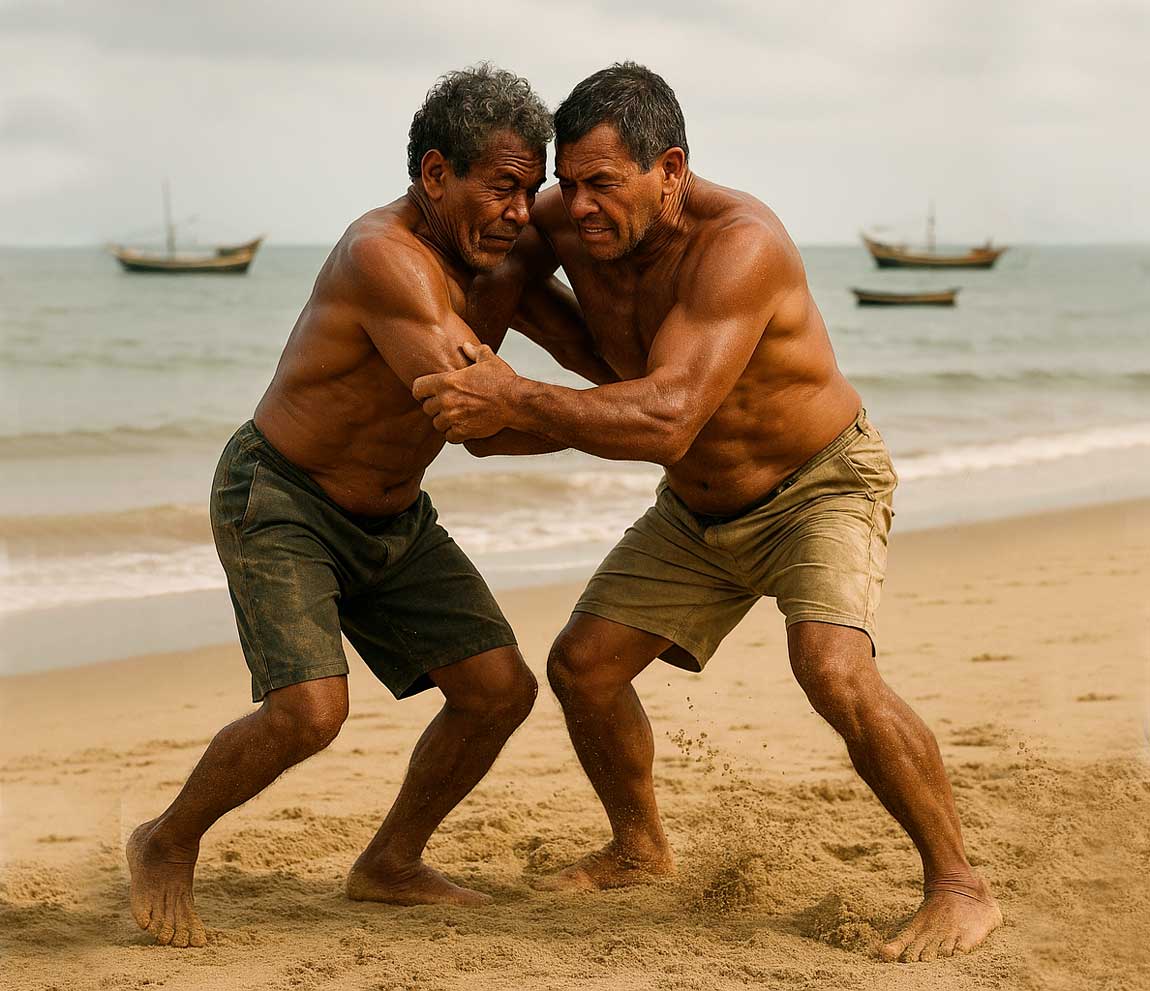
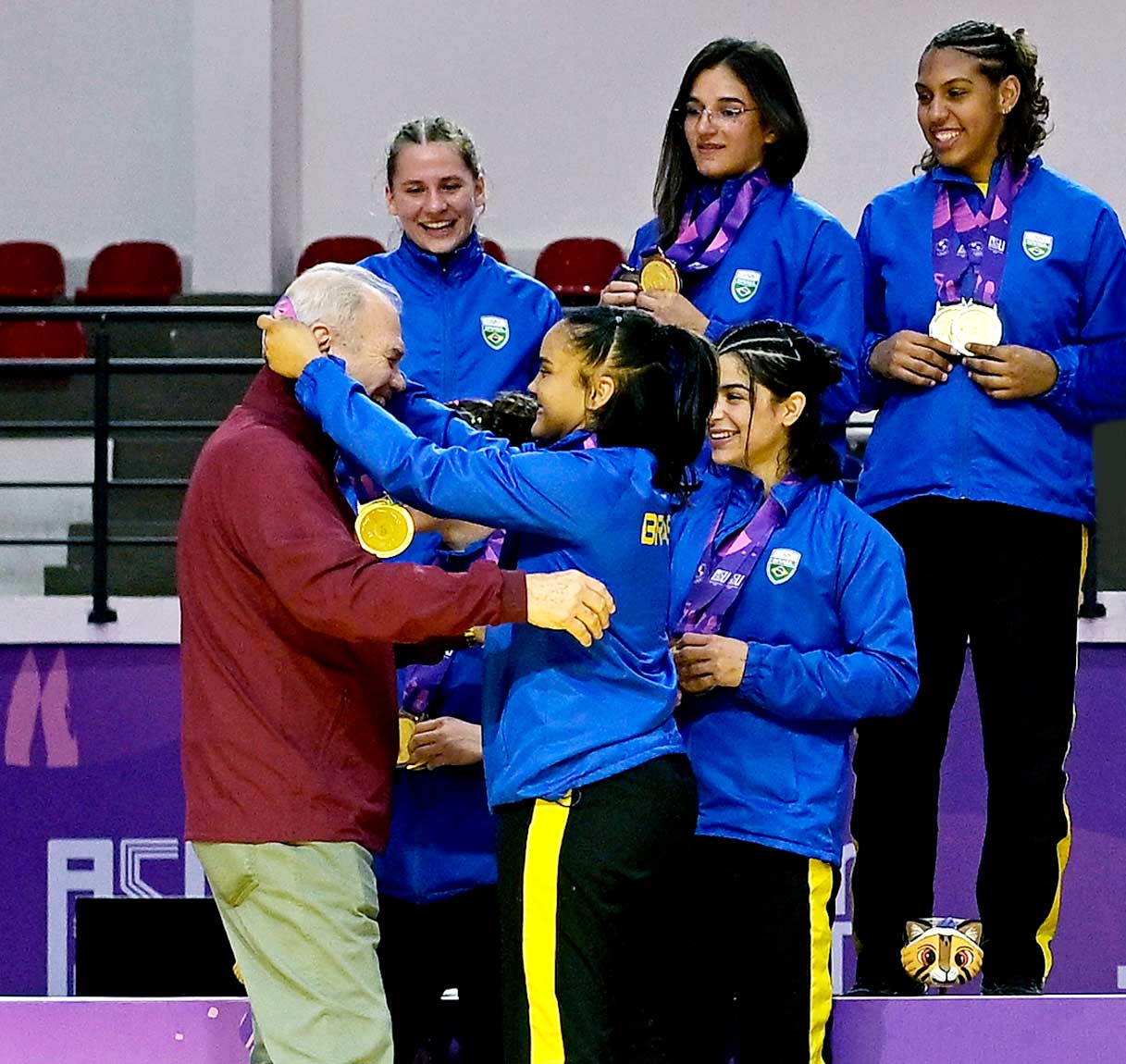 Eduarda Bastos places the gold medal on CBJ President Paulo Wanderley, in a gesture that reflects the bond and commitment between leaders and athletes in shaping the future of Brazilian judo © Alexandre Loureiro / CBJ
Eduarda Bastos places the gold medal on CBJ President Paulo Wanderley, in a gesture that reflects the bond and commitment between leaders and athletes in shaping the future of Brazilian judo © Alexandre Loureiro / CBJ
With a 100% success rate and a dominance that has lasted for decades, Brazilian judo left Asunción, host of the 2025 Junior Pan American Games, with a clear message: there is no rival to match its strength on the continent.
But the secret of this supremacy lies far beyond refined technique. It has been built on historical foundations, strategic governance, and the almost monastic dedication of coaches, mentors, and athletes.
The story begins in the early 20th century, with the arrival of Japanese immigrants in Brazil and the establishment of the first dōjōs in the countryside of São Paulo. From that humble base — tatami mats made of straw and simple thatched roofs — the Brazilian school of judo was born.
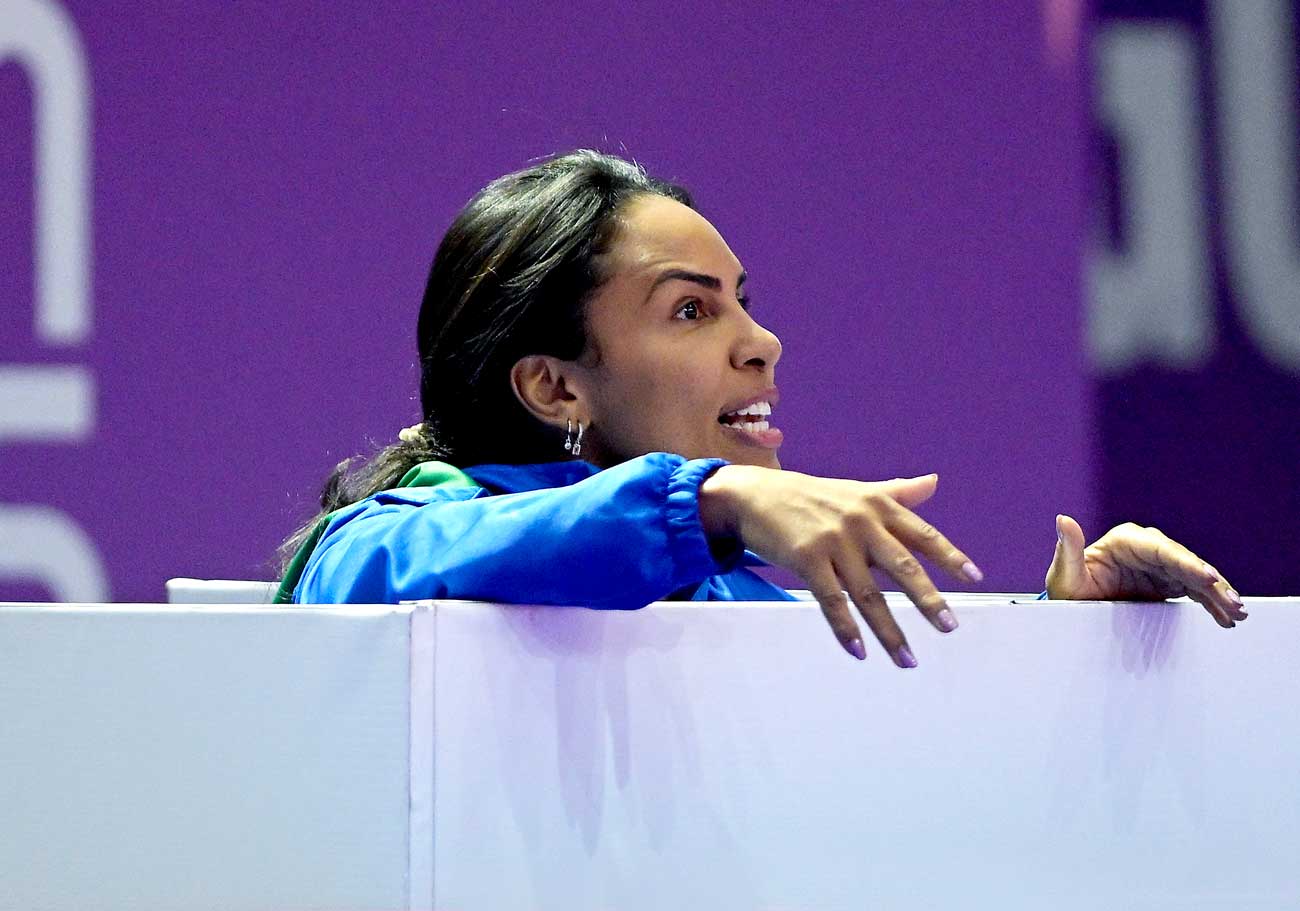
Erika Miranda led the women’s team with the experience of an athlete who earned three World silver medals, four World bronzes, and one gold and two silvers at the Pan American Games © Alexandre Loureiro / CBJ
Institutionalization came in 1958, with the founding of the São Paulo Judo Federation, and was consolidated in 1969 with the creation of the Brazilian Judo Confederation (CBJ), which expanded the practice nationwide in an organized way.
Over the past decades, the CBJ decentralized the development of the sport. Today, talent emerges from all 27 states and the Federal District, whether from traditional clubs such as Pinheiros, Sogipa, Minas Tênis, and Paineiras do Morumby, or from community-based social projects.
The delegation that shone in Asunción featured athletes from Amazonas, Paraíba, Rio Grande do Sul, São Paulo, Paraná, Brasília, Rio de Janeiro, and Espírito Santo — proof that Brazilian judo is both homogeneous and democratic.
Being a high-performance judoka anywhere in the world requires sacrifice. In addition to daily technical and physical training, there is ongoing psychological preparation and an unwavering focus on the path — the dō. Weekends, parties, and ordinary social life give way to a rigorous, meticulously planned routine.
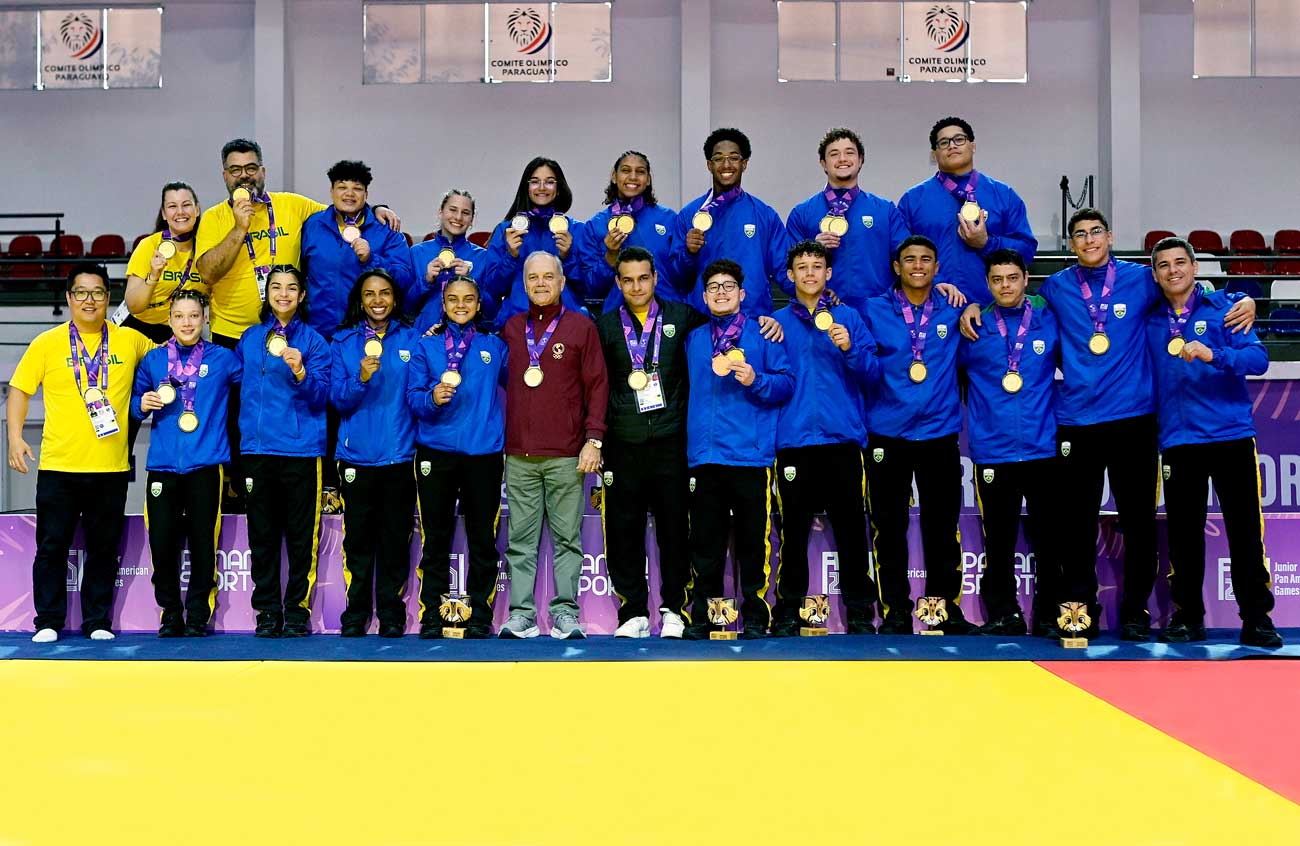
Team Brazil celebrates the mixed team title and a historic campaign at the Junior Pan American Games in Asunción 2025, joined by athletes, coaching staff, and CBJ President Paulo Wanderley © Alexandre Loureiro / CBJ
In Brazil, this commitment is amplified by a network of devoted coaches who, often far from the spotlight, dedicate their lives to shaping talent from the grassroots. They instill discipline, ethical values, and technical fundamentals, preparing young judoka to handle pressure, maintain consistency, and reach the highest level. It is a true sporting vocation, and this symbiosis between athletes’ sacrifice and their coaches’ commitment explains much of the consistency and supremacy of Brazil’s national team.
Across the country, social projects use judo as a tool for transformation and inclusion. One of the most powerful examples of this is Rafaela Lopes Silva, born in Rio de Janeiro in 1992, who began her journey on a community tatami and went on to become the most decorated Brazilian judoka in history.
Her list of achievements is remarkable:
No other Brazilian judoka — male or female — has matched this record. Rafaela embodies how judo can change lives, reveal talent, and elevate Brazil to the highest level of world sport. Her career is proof of how grassroots projects, combined with strong structural support and strategic governance, can generate world-class champions.
Brazil’s rise to the ranks of the world’s top judo powers was no accident. The foundation of this transformation was laid in the past, under the leadership of Paulo Wanderley, when an innovative management vision integrated technical planning, organizational structure, and institutional strengthening.
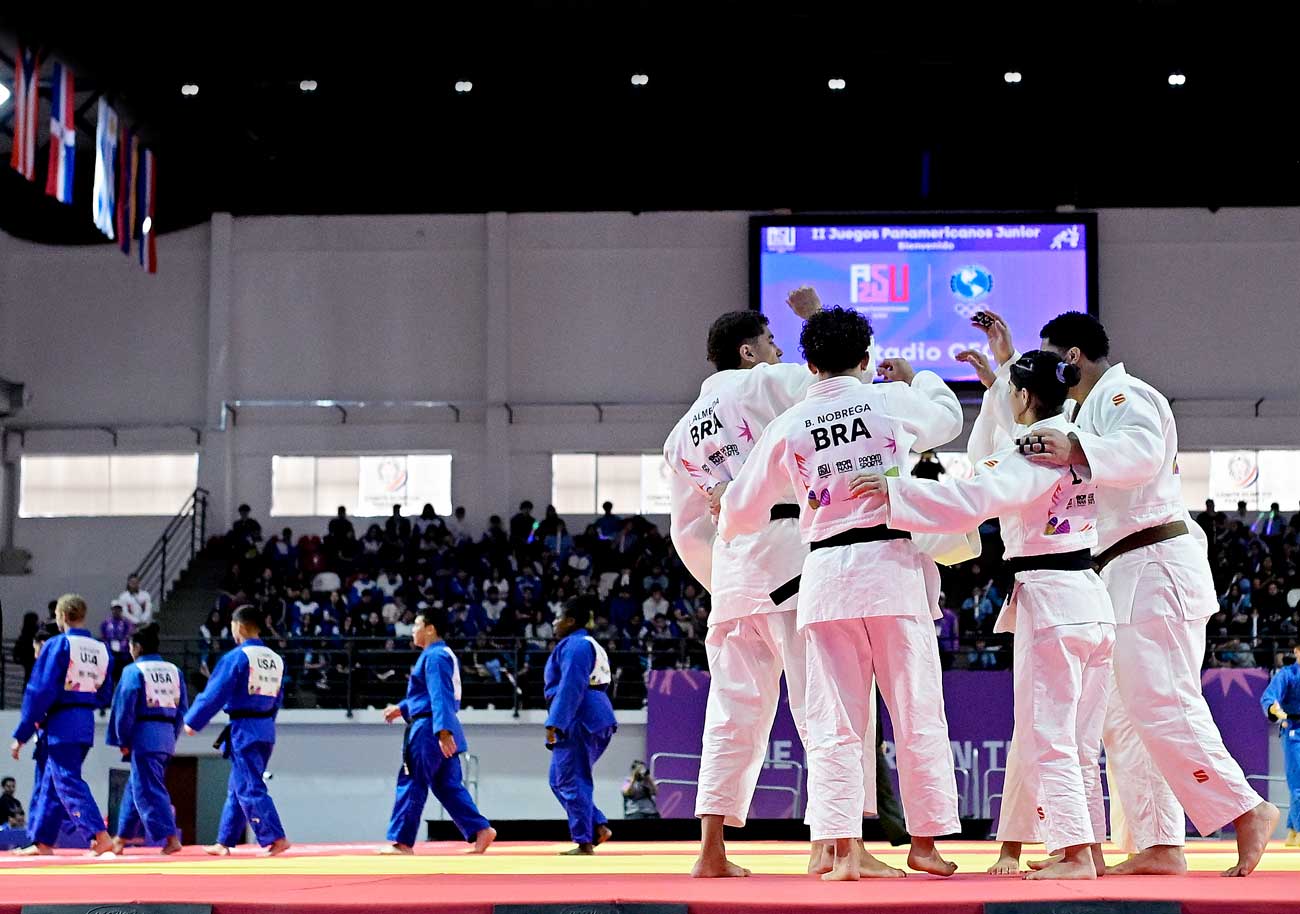
Members of Brazil’s mixed team celebrate on the shiai-jō after securing the gold medal that sealed the nation’s brilliant campaign in Asunción © Alexandre Loureiro / CBJ
This model — which brought coaches, athletes, administrators, and sponsors closer together — modernized processes, expanded resource mobilization, and elevated Brazilian judo to unprecedented levels.
Today, after nearly a decade leading the Brazilian Olympic Committee, Wanderley is back at the helm of the CBJ. With even more experience and strategic vision, he consolidates a system that is both a benchmark for Brazilian sport and respected across the continent.
Four pillars sustain this governance: strategic planning, compliance and a code of ethics, transparency, and regulatory oversight.Programs such as Avança Judô and CBJ Educação structure the ongoing education of coaches and the expansion of the grassroots base.
Brazil boasts, by far, the largest judo community in the world. It is estimated that around two million Brazilians are involved in the sport — from federated athletes to participants in social projects, clubs, academies, and schools. This critical mass impresses not only for its size but also for its geographic reach and social diversity, reflecting a solid development network that spans from grassroots to elite levels.
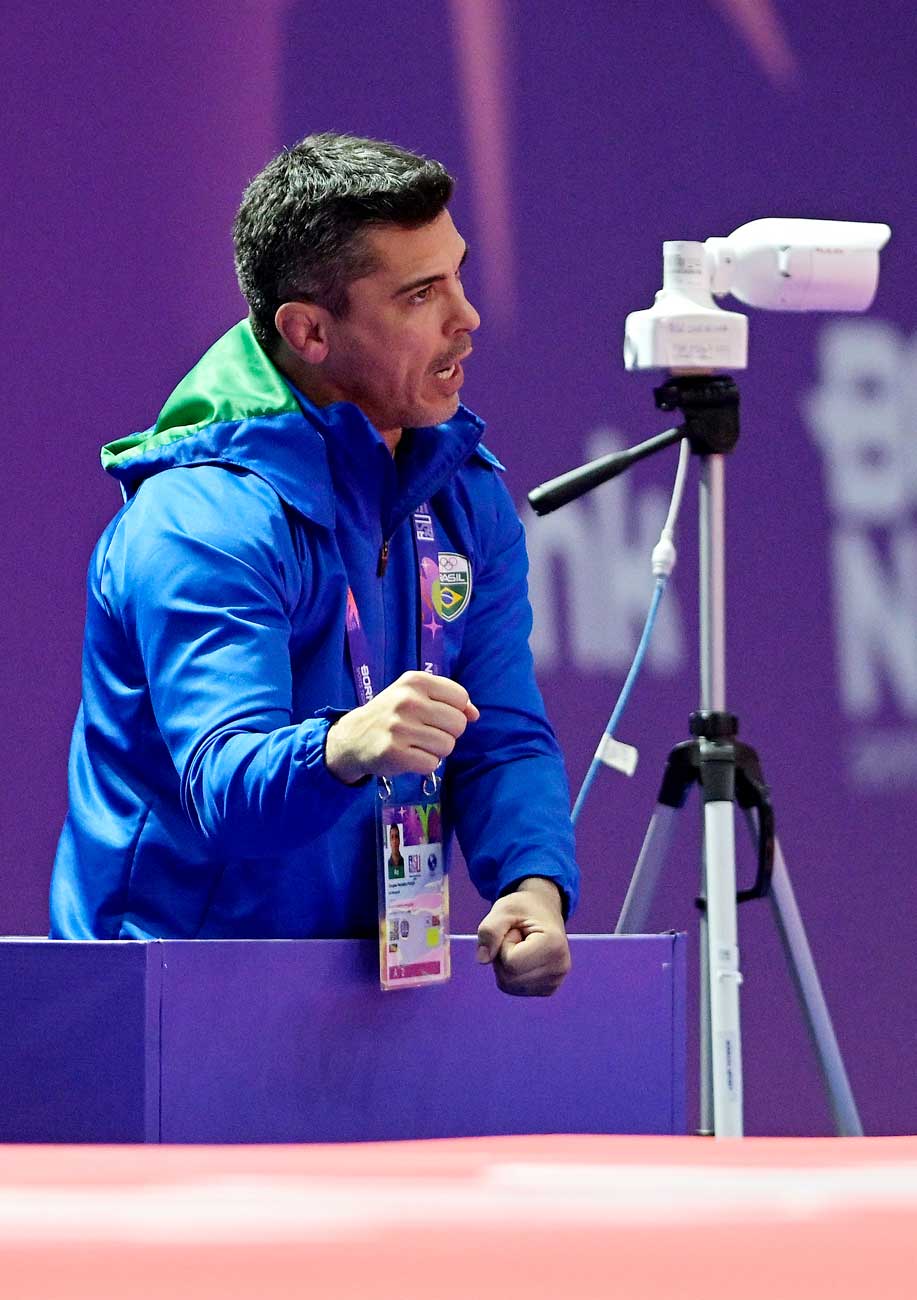
With extensive experience, Douglas Potrich guided the men’s team in Asunción with precision, ensuring Brazil’s flawless performance record © Alexandre Loureiro / CBJ
For comparison: France — considered the strongest judo nation outside Asia — has approximately 600,000 registered judoka, while Japan — the birthplace and historic reference of the sport — currently reports about 122,000 registered athletes. These numbers highlight Brazil’s strength not only as a competitive powerhouse but also as a global hub for judo’s growth and popularization, maintaining a vast base that continuously feeds its national teams and renews generations of champions.
In overwhelming fashion, all 14 Brazilian judoka competing in Asunción reached the podium in their individual events, winning 11 gold, one silver, and two bronze medals. Brazil was present in 12 of the 14 finals, defeating traditional continental rivals such as Colombia, Ecuador, the United States, and Cuba, with near-perfect efficiency in gold medal matches.
The campaign ended with another highlight: victory in the mixed team event, where Brazil overcame the United States, Colombia, and Cuba to secure another title, closing the competition with 12 golds in 15 events.
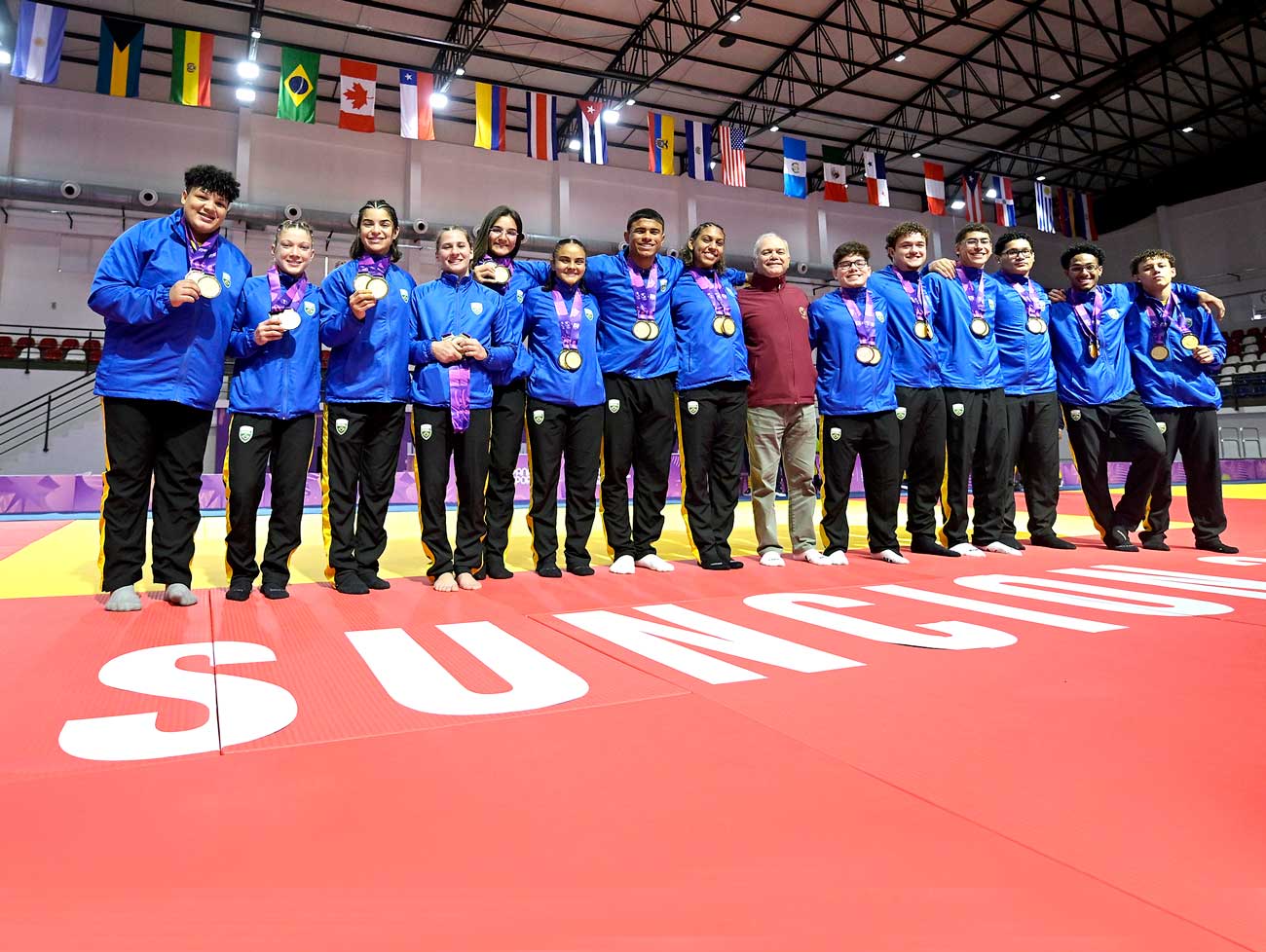
Alongside the medalists, Paulo Wanderley closed the campaign celebrating the cohesion between leadership and the champion team in Asunción © Alexandre Loureiro / CBJ
Since ending Cuba’s supremacy at the 2003 Pan American Games in Santo Domingo, Brazil has not only maintained but expanded its continental leadership. Today, it ranks among the world’s top five powers — behind only Japan, France, Georgia, and Italy. The results in Asunción confirm that the structure built by CBJ over decades is solid, sustainable, and capable of turning regional dominance into consistent results on the world stage.
Becoming the giant of the Americas required visionary leadership and the creation of a robust structure that connected tradition with modernity. This framework — uniting history, strategic governance, and the full dedication of athletes — is now a reference of excellence in Brazilian sport and an emerging model for other disciplines across the continent.
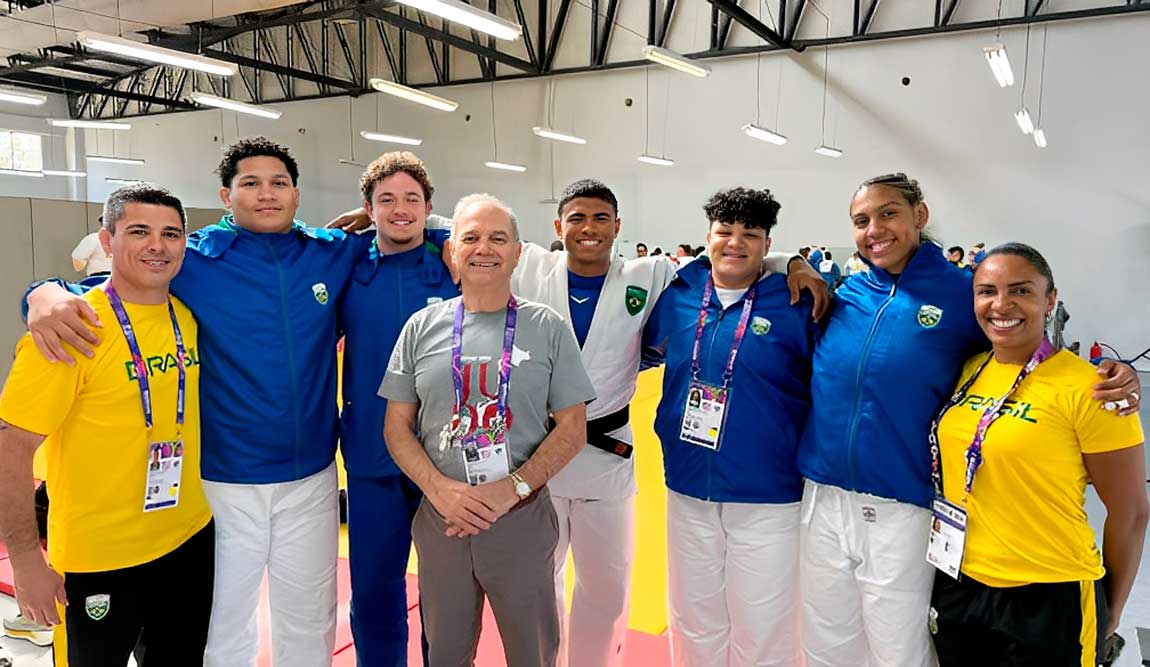
CBJ President Paulo Wanderley followed every step of the Brazilian team closely throughout the campaign in Asunción © Alexandre Loureiro / CBJ
Brazil’s campaign in Asunción was not just a string of victories — it was the confirmation that Brazilian judo has achieved a sustainable level of excellence. The mixed team gold was not simply the final medal of the competition; it was the seal of approval for a project built with strategic vision, modern management, and deep historical roots.
In the Americas, Brazil is not only the nation to beat in judo — it is the reference point, the model, and for many, the inspiration. More than the continent’s giant, Brazil is a rising world power, ready to transform regional dominance into global prominence. Asunción 2025 will be remembered as the moment when the country showed, unequivocally, that the future of world judo will inevitably pass through the green and yellow.
